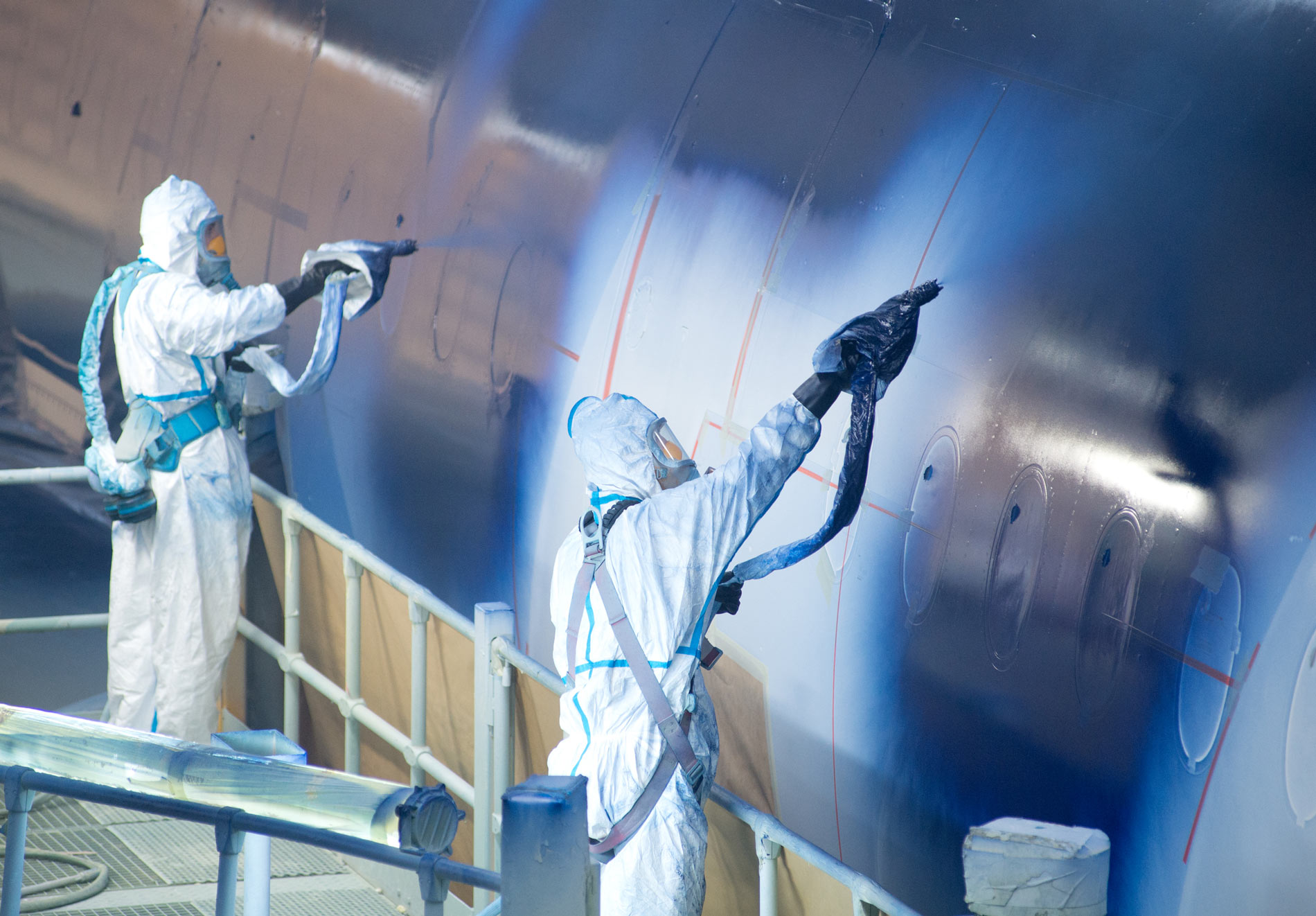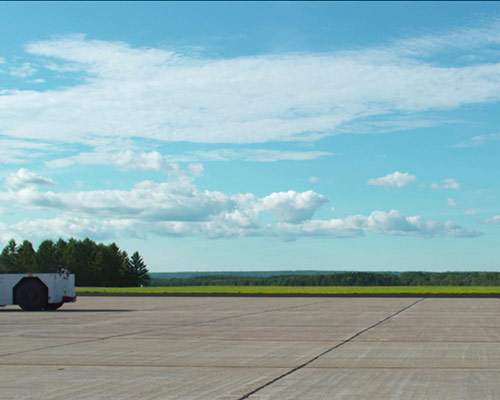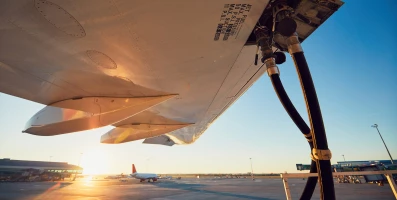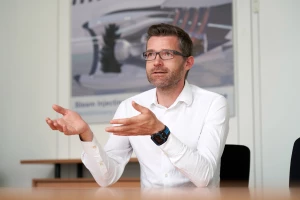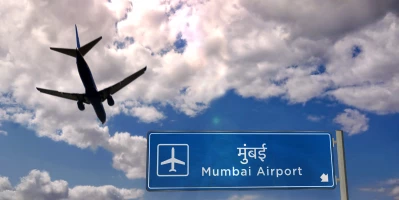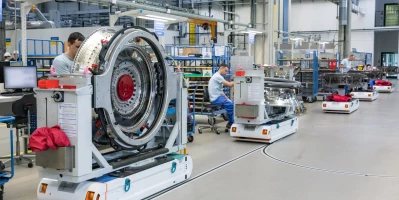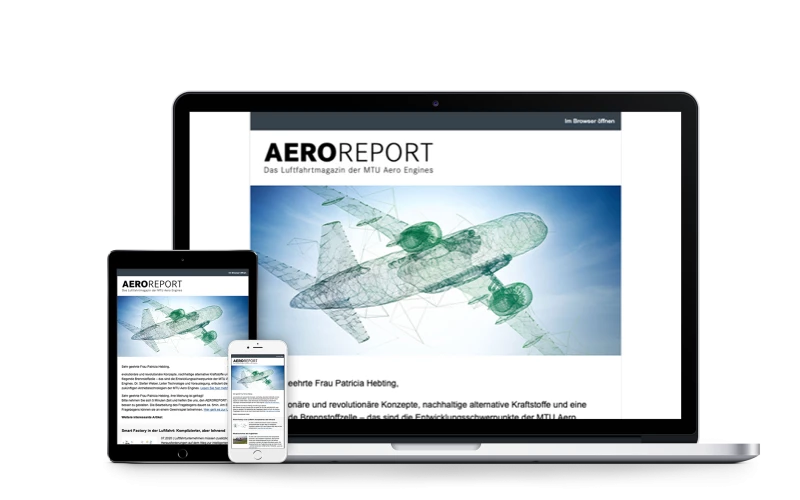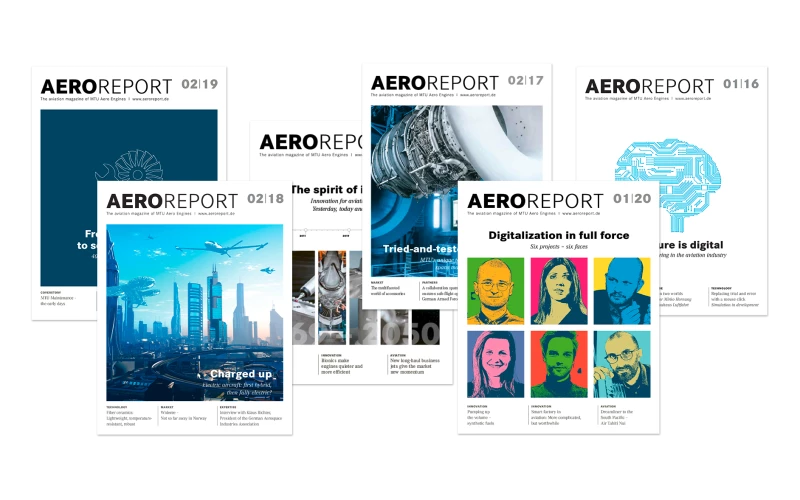Aircraft manufacturers are keen to reduce weight whenever they can. There are good reasons for this wrestling over every gram: the lighter the aircraft, the less fuel it consumes, the more passengers it can accommodate and the better its carbon footprint. Consequently, engine manufacturers are constantly optimizing their designs: fuselage parts are increasingly being made from expensive, carbon-fiber-reinforced plastics; for the interior design, solid metals are being replaced by fiber-reinforced composites. And then the painters come along and spray almost a ton of paint on an Airbus A380. Is that really necessary?
“Absolutely,” explains Maike Timm, production manager for aircraft painting services at Lufthansa Technik. “Without the protective layer of paint, the aircraft components would get damaged very quickly—whether they are made from metal or plastic, it makes no difference.” In everyday flight service, the surfaces are exposed to huge strains: ice crystals, dust particles, ash and grains of sand pelt into the materials at speeds of 1,000 kilometers an hour. On top of this, there is UV radiation and temperature swings of -55 to +100 degrees Celsius. Unless the surfaces are sealed, de-icing agents, kerosene and lubrication oil residues cause metals to quickly corrode and destroy the material compounds of fiber-reinforced plastics. For cost reasons, the first passenger aircraft took to the skies unpainted—there was a war on in Europe. But the aluminum alloys were soon tarnished and had to be frequently repolished. Today not even the Junkers Ju 52 flies without a protective paint layer—even if it is not apparent at first sight. The outer shell sports a coat of metallic paint.
Protection coat by coat
Without paint, nothing works in aviation. However, the cans of paint you find in your local home improvement center are not up to the job—aircraft paint has to be extremely thin, scratchproof, dirt-resistant and environmentally friendly. Summing up the situation, Timm says: “Thanks to new developments, we can now work very economically. Almost a ton of paint for the Airbus A380 may sound like a lot, but it’s spread over a surface of nearly 4,000 square meters. The four to five coats of paint that must be applied have a combined thickness of only a fraction of a millimeter.”
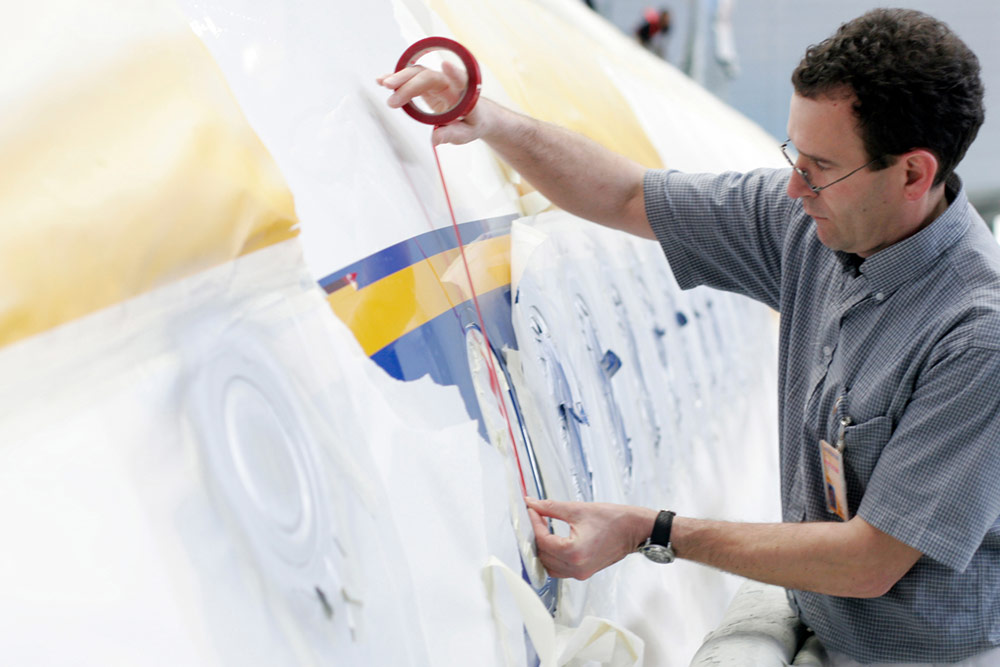
Perfect fit A Lufthansa Technik employee working on a window band on D-AIRX, an Airbus A321-131, which was painted in early 1950s style to celebrate 50 years of Lufthansa in 2013.

Perfect fit A Lufthansa Technik employee working on a window band on D-AIRX, an Airbus A321-131, which was painted in early 1950s style to celebrate 50 years of Lufthansa in 2013.
Decades of experience are contained within these layered systems. In the simplest case, two different components are required: painters first apply an anti-corrosion primer to the cleaned and sanded surfaces; then the paint itself can be sprayed onto the primer. At this stage, there are also one-coat and two-coat systems available. The paint manufacturer AkzoNobel has developed a two-coat system composed of a base coat and a clear coat. “The base coat/clear coat system has various advantages,” explains Thomas Böttcher, sales manager for aircraft paints at AkzoNobel Aerospace Coatings. “The clear coat protects against UV radiation and increases the gloss and paint retention. In addition, the surfaces are so smooth that the aircraft is less susceptible to dirt and has to be washed on average only half as often. And, lasting six to eight years, the lifetimes of the two-coat paintwork are significantly longer than most other paint systems, which last an average of only five years.”
“Without the protective layer of paint, the aircraft components would get damaged very quickly—whether they are made from metal or plastic, it makes no difference.“
Detailed work on aircraft wing Painting at Airbus paint shop in Toulouse.
Further intermediate layers allow additional functions to be integrated, such as selective paint removability. This function is created by means of a thin separating layer applied to the anti-corrosion primer. If the aircraft needs a new paintjob after a few years, the old paint can be chemically stripped along the separating layer, leaving the anti-corrosion coating beneath intact. “In this way, it is possible to cut the times needed for removing old paint and applying new paint by ten percent,” emphasizes Böttcher.







